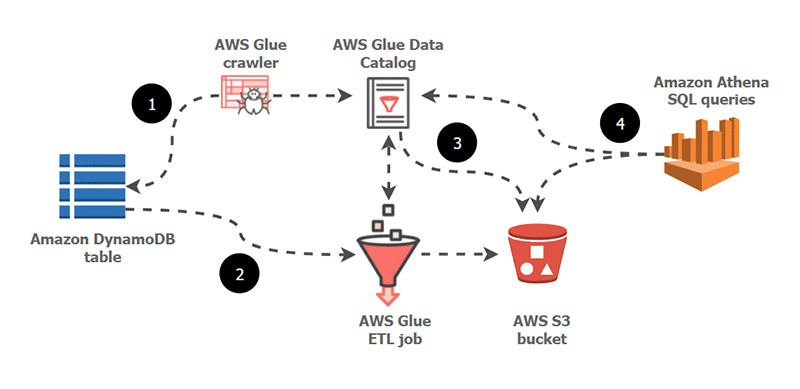AWS Database Blog
Category: Amazon Athena
Understanding Amazon DynamoDB encryption by using AWS Key Management Service and analysis of API calls with Amazon Athena
As applications evolve to be more scalable for the web, customers are adopting flexible data structures and database engines for their use cases. Using NoSQL data stores has become increasing popular because of NoSQL’s flexible data model for building modern applications. Amazon DynamoDB is a fast and flexible NoSQL database service that can provide consistent […]
Simplify Amazon DynamoDB data extraction and analysis by using AWS Glue and Amazon Athena
November 2022: Please refer to Accelerate Amazon DynamoDB data access in AWS Glue jobs using the new AWS Glue DynamoDB Export connector for more recent updates on using Amazon Glue for extraction data from DynamoDB. More than 100,000 AWS customers have chosen Amazon DynamoDB for mobile, web, gaming, ad tech, IoT, and many other applications. […]
How to perform advanced analytics and build visualizations of your Amazon DynamoDB data by using Amazon Athena
You can reap huge analytical value from billions of items and millions of requests per second in your Amazon DynamoDB service. However, you need to export your data in order to get that analytical value. Copying the data from a DynamoDB table to an analytics platform allows you to extract rich insights. In order to […]
Audit Amazon Aurora Database Logs for Connections, Query Patterns, and More, using Amazon Athena and Amazon QuickSight
Amazon Aurora offers a high-performance advanced auditing feature that logs detailed database activity to the database audit logs in Amazon CloudWatch. If you are using Aurora 1.10.1 or greater, you can use advanced auditing to meet regulatory or compliance requirements by capturing eligible events like tables queried, queries issued, and connections and disconnections. You can […]
Using AWS Database Migration Service and Amazon Athena to Replicate and Run Ad Hoc Queries on a SQL Server Database
Prahlad Rao is a solutions architect at Amazon Web Services. When you replicate a relational database to the cloud, one of the common use cases is to enable additional insights on the replicated data. You can apply the analytics and query-processing capabilities that are available in the AWS Cloud on the replicated data. To replicate […]




